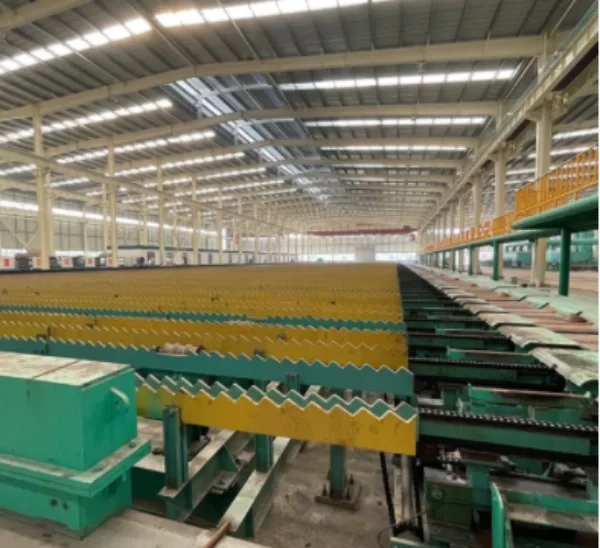In the steel rolling industry, cooling bed machines have become indispensable equipment and play a key role in the post-rolling process. This sophisticated machine is used to receive, transfer and cool heated steel products, ensuring they are ready for subsequent finishing processes. In this blog post, Yushun will share with you the benefits of steel rolling cooling bed machine for sale, highlighting its importance in the metallurgical steel rolling industry.
Simplicity and Efficiency: The Core of Design
The cooling bed machine is renowned for its simple structure, which not only facilitates ease of operation but also contributes to its low investment cost. This streamlined design is a testament to the machine's ability to perform complex tasks with minimal complexity, making it an attractive option for businesses looking to optimize their production lines without breaking the bank.
Mechanical and Water Cooling Systems: A Dual Approach to Cooling
At the heart of the cooling bed machine lies a mechanical transmission system that works in tandem with an advanced water cooling system. This dual approach ensures efficient heat dissipation, critical for reducing the temperature of steel products from over 700°C to below 150°C. The integration of these systems underscores the machine's commitment to achieving optimal cooling results while maintaining operational efficiency.
Customizable Working Table: Tailored to Production Needs
One of the standout features of the cooling bed machine is its customizable working table. With various sizes available, such as 120x10m to 66x7.5m, the machine can be tailored to fit the specific requirements of different production lines. This adaptability is crucial for manufacturers who need to handle a variety of steel products, including rebar, garden steel, and steel pipes.

Innovative Approach Table: Ensuring Straight-Line Movement
The approach table, an integral part of the cooling bed machine, is designed to accelerate the steel bars post-segment flying shears, creating an initial tension that maintains straight-line movement. This feature is vital for the bars' quick rise after being cut off, ensuring they are promptly separated from the rolling process.
Braking Apron Board: Controlled Deceleration
The braking apron board is a unique component that uses vertical movement to create friction resistance, effectively braking the steel. This controlled deceleration is crucial for feeding the steel into the straightening plate of the cooling bed, enhancing the overall process control and safety.
Step-by-Step Cooling: Precision and Uniformity
The step-by-step cooling mechanism of the cooling bed machine ensures that the steel products are cooled uniformly and precisely. With gear spacing of 90mm and fixed and movable gear spacings of 500mm, the machine provides a systematic approach to cooling, which is essential for maintaining product quality and consistency.
Advanced Exiting Device: Streamlined Product Flow
The cooling bed machine is equipped with a hydraulic lifting horizontal moving or double channel rotary exiting device, which facilitates a smooth and efficient exit of the cooled steel products. This advanced exiting mechanism is designed to minimize downtime and enhance the overall productivity of the steel rolling process.
Conclusion
The steel rolling cooling bed machine stands as a beacon of innovation in the steel rolling industry, offering a forward-thinking solution to the challenges of cooling high-temperature steel products. Its features not only address the immediate needs of cooling but also contribute to the efficiency, safety, and scalability of steel production processes. As the industry continues to evolve, the cooling bed machine is poised to remain at the forefront of technological advancements, driving the future of steel manufacturing.
https://www.wxisun.com/Benefits-of-steel-rolling-cooling-bed-machine.html
Yushun
yushuntech@163.com

